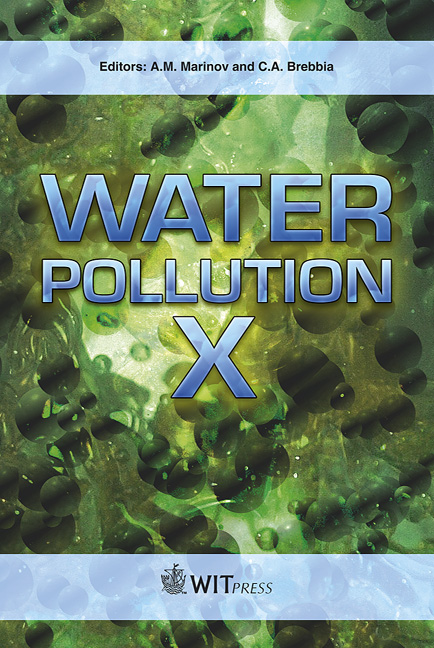Characterization Of An Absorbent Based On Raphanus Sativus (L. Var.), A Solid Residue From Biodiesel Production, For The Removal Of Methylene Blue
Price
Free (open access)
Transaction
Volume
135
Pages
11
Page Range
345 - 355
Published
2010
Size
1,503 kb
Paper DOI
10.2495/WP100301
Copyright
WIT Press
Author(s)
D. A. Lázaro, C. L. Caldeira, M. S. S. Dantas, A. S. Franca & M. B. Mansur
Abstract
In this study, an adsorbent produced from Raphanus sativus (L. var.), a residue from the biodiesel industry, was investigated for the removal of methylene blue (MB) from textile effluents aiming to: (i) obtain physical and textural characteristics of the given carbon, and (ii) understand the MB adsorption mechanism onto such carbonaceous structures. The following methods were employed: SEM-EDS microscopy, gas adsorption and Raman spectroscopy. Physical and textural characteristics of the carbon obtained by classical methodologies such as BET, BJH and SEM analyses were corroborated by the Raman analysis. For the experimental conditions used on the preparation of the activated carbon of Raphanus sativus, the main physical parameters measured were specific surface area (236.3 m2.g-1), total pore volume (0.06 cm3.g-1) and average pore size (1.4 nm). SEM and Raman analysis revealed that a microporous structure of carbon was obtained as the ratio between the disorder band and the graphite band was higher than unity, thus indicating that MB adsorption may occur predominantly at the surface of the adsorbent, given that the diameter of MB molecule was estimated to be nearly 1.5 nm. Raman analysis of solid MB revealed that MB molecules are predominantly found as dimmers in the solid however they are adsorbed as monomer in the Raphanus sativus carbon. Results evidence that MB adsorption probably occurs by bonding of monomer
Keywords
carbon characterization, Raman spectroscopy, adsorption, methylene blue





